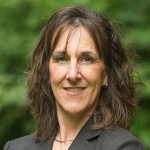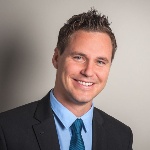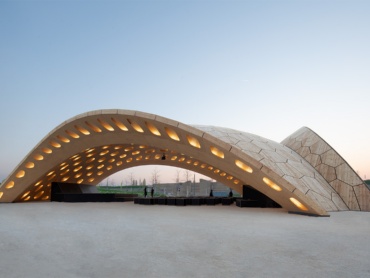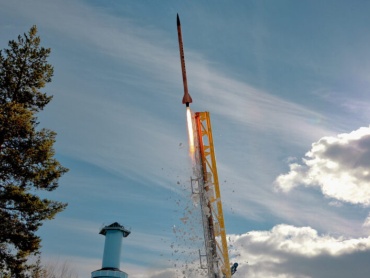The University of Stuttgart is one of Germany's premier hubs for fundamental research, boasting two clusters of excellence, four DFG Collaborative Research Centers, and two Transregios (with one holding a spokesperson role). Additionally, it oversees five DFG Research Training Groups (one in collaboration with Heidelberg where Heidelberg has taken on the role of spokesperson university) and coordinates six DFG Priority Programs.
Cluster of Excellence
[Photos: Visus / University of Stuttgart, IntCDC Planungs GmbH]
Collaborative Research Centers and Transregios
[Photos: Universität Stuttgart / Sven Cichowicz, Uli Regenscheit, o.A., o.A., Visus, o.A.]
Collaborative Research Centers and Transregios that the University of Stuttgart is involved in
- CRC-TRR 146: Multiscale Simulation Methods for Soft Matter Systems
- Spokesperson: Prof. Friederike Schmid, Johannes Gutenberg-Universität Mainz
Sub-projects of the University of Stuttgart: Prof. Thomas Speck, Institute for Theoretical Physics IV
- CRC-TRR 195: Symbolic Tools in Mathematics and their Application
- Spokesperson: Prof. Gunter Malle, TU Kaiserslautern
Sub-projects of the University of Stuttgart: Prof. Meinolf Geck, Institute of Algebra and Number Theory
- CRC-TRR 353: Regulation of cell death decisions
- Spokesperson: Prof. Thomas Brunner, University of Konstanz
Sub-projects of the University of Stuttgart: Prof. Markus Morrison, Institute of Cell Biology and Immunology
- CRC-TRR 392: Molecular Evolution in Prebiotic Environments
- Spokesperson: Prof. Dieter Braun, Ludwig-Maximilians-Universität München (LMU)
Sub-projects of the University of Stuttgart: Prof. Clemens Richert, Institute of Organic Chemistry
- CRC 1053: Multi-Mechanism-Adaptation for the Future Internet
- Spokesperson: Dr. Michaela Bock, TU Darmstadt
Sub-projects of the University of Stuttgart: Prof. Christian Becker, Institute for Parallel and Distributed Systems
- CRC 1173: Wave phenomena: analysis and numerics
- Spokesperson: Prof. Marlis Hochbruck, Karlsruhe Institute of Technology (KIT)
Sub-projects of the University of Stuttgart: Prof. Guido Schneider, Institute of Analysis, Dynamics and Modeling
- CRC 1391: Different Aesthetics
- Spokesperson: Prof. Annette Gerok-Reiter, University of Tübingen
Sub-projects of the University of Stuttgart: Prof. Manuel Braun, Institute of Literary Studies
- CRC 1481: Sparsity and Singular Structures
- Spokesperson: Prof. Holger Rauhut, RWTH Aachen
Sub-projects of the University of Stuttgart: Prof. Benjamin Stamm, Institute of Applied Analysis and Numerical Simulation
- CRC 1527: High Performance Compact Magnetic Resonance
- Spokesperson: Prof. Jan Korvink, Karlsruhe Institute of Technology (KIT)
Sub-projects of the University of Stuttgart: Prof. Jens Anders, Institute of Smart Sensors
- CRC 1548: Fermi Level Engineering Applied to Oxide Electroceramics
- Spokesperson: Prof. Andreas Klein, TU Darmstadt
Sub-projects of the University of Stuttgart: Prof. Oliver Clemens, Institute for Materials Science
- CRC 1574: A Circular Factory for the Perpetual Product
- Spokesperson: Prof. Gisela Lanza, Karlsruhe Institute of Technology (KIT)
Sub-projects of the University of Stuttgart: Prof. Steffen Staab and Jun.-Prof. Alina Roitberg, Institute for Artificial Intelligence
- CRC 1551: Polymer Concepts in Cellular Function
- Spokesperson: Prof. Edward Lemke, Johannes Gutenberg-Universität Mainz
Sub-projects of the University of Stuttgart: Prof. Thomas Speck, Institute for Theoretical Physics IV
DFG-Research Training Groups
[Photos: IBTB / Universität Stuttgart, Uli Regenscheit / University of Stuttgart, Uli Regenscheit, o.A., Sven Cichowicz, PCI, UHei, T. Schwerdt]
Research Training Groups that the University of Stuttgart is involved in
- GRK 2516: Control of structure formation in soft matter at and through interfaces
- Spokesperson: Prof. Pol Besenius, Johannes Gutenberg-Universität Mainz
Participants of the University of Stuttgart: Prof. Thomas Speck, Institute for Theoretical Physics IV
DFG-Priority Programs
[Photos: IFU, o.A., 5th Institute of Physics/ Celina Brandes, o.A., o.A., o.A., o.A.]
DFG-Research Units
[Photos: University of Stuttgart/ Institute of Aerodynamics and Gas Dynamics]
Research Units that the University of Stuttgart is involved in
- FOR 2537: Emerging grammars in language contact situations: A comparative approach
- Applicant Institution: Humboldt-Universität zu Berlin
Participants of the University of Stuttgart: Prof. Sabine Zerbian, Institute of Linguistics
- FOR 2630: Understanding the global freshwater system by combining geodetic and remote sensing information with modelling using a calibration/data assimilation approach (GlobalCDA)
- Applicant Institution: Universität Bonn
Participants of the University of Stuttgart: Prof. Nico Sneeuw, Institute of Geodesy
- FOR 2687: Cyclic variations in highly optimized hydrogen-fueled spark-ignition engines: experiment and simulation of a multi-scale causal chain
- Applicant Institution: Universität Duisburg-Essen
Participants of the University of Stuttgart: Prof. Andrea Beck, Institute of Aerodynamics and Gas Dynamics
- FOR 2724: Thermal machines in the quantum world
- Applicant Institution: FU Berlin
Participants of the University of Stuttgart: Prof. Jörg Wrachtrup, 3rd Institute of Physics and Prof. Eric Lutz, Institute for Theoretical Physics
- FOR 2811: Adaptive Polymer Gels with Controlled Network Structure
- Applicant Institution: Johannes Gutenberg-Universität Mainz
Participants of the University of Stuttgart: Prof. Christian Holm, Institute for Computational Physics
- FOR 2863: Metrology for THz Communications
- Applicant Institution: TU Braunschweig
Participants of the University of Stuttgart: Prof. Ingmar Kallfass, Institute of Robust Power Semiconductor Systems
- FOR 5151: Quantifying Liver Perfusion-Function Relationship in Complex Resection - A Systems Medicine Approach
- Applicant Institution: Universitätsklinikum Jena
Participants of the University of Stuttgart: Prof. Nicole Radde, Institute for Systems Theory and Automatic Control and Prof. Tim Ricken, Institute of Structural Mechanics and Dynamics in Aerospace Engineering
- FOR 5157: Structuring the input in language processing, acquisition and change
- Applicant Institution: Universität Mannheim
Participants of the University of Stuttgart: Prof. Achim Stein and Dr. Thomas Rainsford, Institute of Linguistics
- FOR 5230: Financial Markets and Frictions – An Intermediary Asset Pricing Approach
- Applicant Institution: Karlsruher Institut für Technologie KIT
Participants of the University of Stuttgart: Prof. Phillip Schuster, Institute of Business Administration
- FOR 5409: Structure-Preserving Numerical Methods for Bulk- and Interface-Coupling of Heterogeneous Models
- Applicant Institution: RWTH Aachen
Participants of the University of Stuttgart: Michael Schlottke-Lakemper, HLRS
- FOR 5434: Information Abstraction During Sleep
- Applicant Institution: Eberhard Karls Universität Tübingen
Participants of the University of Stuttgart: Prof. Ingrid Ehrlich, Institute of Biomaterials and Biomolecular Systems
- FOR 5596: Exploiting the potential of S-adenosylmethionine-dependent enzyme chemistry
- Applicant Institution: Albert-Ludwigs-Universität Freiburg
Participants of the University of Stuttgart: Prof. Dr. Jürgen Pleiss, Institute for Biochemistry and Technical Biochemistry
Excellent conditions for research, studies and cooperation
You might also be interested in
[Photos: ICD/ITKE/University of Stuttgart, HyEnD / University of Stuttgart]

Birgit Harrer
Head of Department / Deputy head of division / Coordination of applications for DFG Collaborative Research Centers and Transregios

Martin Hummel
Dr.Head of Department























